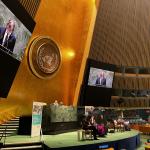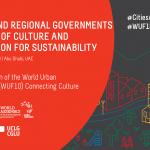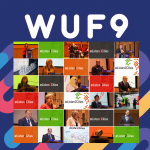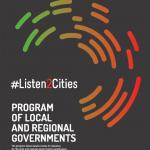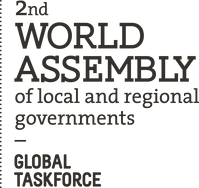
The final draft of the New Urban Agenda to be adopted at the Habitat III Conference in October recognizes the local government constituency and includes many of our main recommendations.
The final text of the New Urban Agenda, which will be adopted by UN Member States at the Third UN Conference on Housing and Sustainable Urbanization (Habitat III) in Quito in October, was released on Tuesday, 13th of September. The document, which mentions “local governments” 35 times and “local authorities” is four times, provides many reasons for the local and regional government networks of the Global Taskforce to celebrate, and is testament to the advocacy work of our constituency over the past two years.
From SDG11 to Habitat III
Since the Rio+20 Conference on sustainable development in 2012, local and regional governments have been calling for international agendas on sustainability to be linked up and harmonized into a single, universal agenda. Paragraph 164 of the New Urban Agenda is an important step forward in this regard, which stresses that “the follow-up and review of the New Urban Agenda must have effective linkages with the follow-up and review of the 2030 Agenda for Sustainable Development to ensure coordination and coherence in their implementation.” This statement will be important for the achievement of all 17 SDGs, but particularly Goal 11 on Sustainable Cities and Human Settlements.
Recognition of the role of local and regional governments on the global stage
The World Assembly of Local and Regional Governments is acknowledged in paragraph 8 of the Agenda, where UN Member States say “We acknowledge the contributions of national governments, as well as the contributions of sub-national and local governments, in the definition of the New Urban Agenda and take note of the second World Assembly of Local and Regional Governments”.
What is more, 169 calls for continued collaboration with the World Assembly in the follow-up and review of the New Urban Agenda, noting “the importance of continuing to engage in the follow-up and review of the New Urban Agenda with sub-national and local governments associations represented at the World Assembly of Local and Regional Governments”.
Local and regional governments will be essential to the implementation of the agenda, so our inclusion in the follow-up mechanisms will be vital to the success of the New Urban Agenda over the coming decades. In this regard, paragraph 163 acknowledges “the importance of local governments as active partners in the follow-up and review of the New Urban Agenda at all levels”, and encourages them to develop “implementable follow-up and review mechanisms at the local level, including through relevant associations and appropriate platforms. We will consider strengthening, where appropriate, their capacity to contribute in this respect.”
Building the urban governance structure
The section on building the urban governance structure is particularly important. First, it reiterates Member States’ acknowledgement of the Guidelines on Decentralization and Access to Basic Services for all, adopted by the Governing Council of UN-Habitat in 2007. In paragraph 87, Member States say they will “foster stronger coordination and cooperation among national, sub-national, and local governments, including through multi-level consultation mechanisms and by clearly defining the respective competences, tools, and resources for each level of government”.
What is more, in paragraph 90, Member States say they will strengthen the “capacities” of local governments, promote governance across administrative borders based on “functional territories” and ensure “reliable financing mechanisms” in metropolitan areas. Importantly, the text says that central governments “will take measures to promote women’s full and effective participation and equal rights in all fields and in leadership at all levels of decision-making, including in local governments”.
The New Urban Agenda will depend on states following through in these areas and enabling well-resourced, empowered local governments to implement the New Urban Agenda in cities and territories.
The Right to the City, a flagship recommendation of local and regional governments
While the New Urban Agenda speaks of a “shared vision of cities for all” in paragraph 11, it also makes reference to the concept of the “Right to the City”, and efforts made by some governments to enshrine it. This concept was one of the key recommendations of the Global Taskforce in the Habitat III process and its inclusion in an international agreement of this type, even in an indirect way, is a landmark achievement.
The local and regional government networks of the Global Taskforce will continue to work on promoting the Right to the City among our members and on developing and sharing policy solutions to make it a reality from the bottom up.
Bridging the rural-urban divide
Another of the main calls by the Global Taskforce was for the New Urban Agenda to adopt a ‘territorial approach’, including both urban and rural areas. This principle is expressed in paragraph 50, where Member States “commit to encourage urban-rural interactions and connectivity by strengthening sustainable transport and mobility, technology and communication networks and infrastructure, underpinned by planning instruments based on an integrated urban and territorial approach.”
Local and regional governments at Habitat III
The Second World Assembly of Local and Regional Governments will meet in Bogotá on the 14th of October in the framework of the UCLG Congress, and again in Quito during the Habitat III Conference. These will be opportunities for the constituency to assess the New Urban Agenda, celebrate our achievements, and discuss how to move our Global Agenda forward beyond Habitat III.
Publication: Our Habitat III Journey

